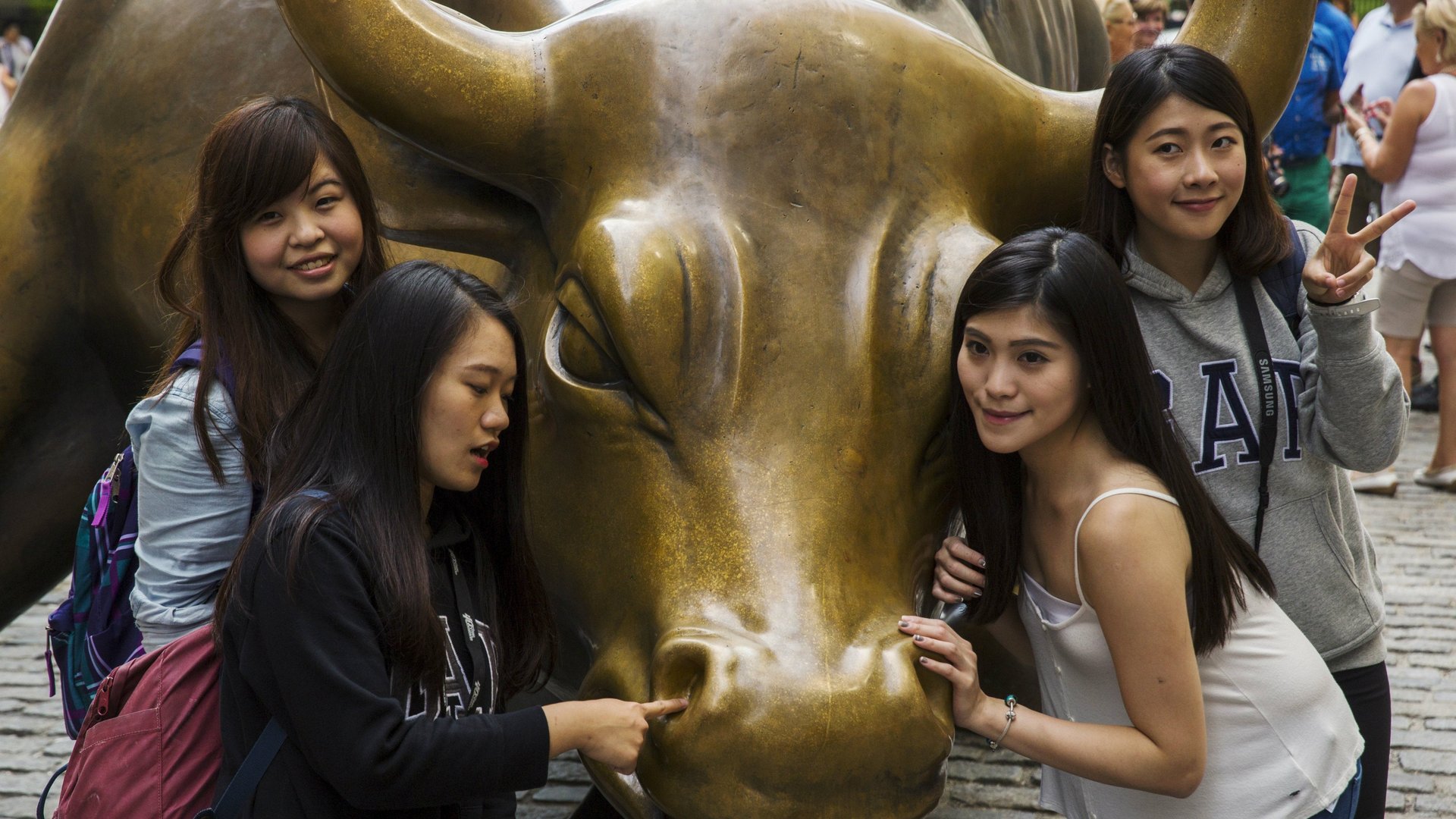Tea kettles, slippers, congee: US hotels are wooing the Chinese tourist class
Is a $15 electric kettle the key to luring Chinese tourists? A growing number of US hotel chains think so.


Is a $15 electric kettle the key to luring Chinese tourists? A growing number of US hotel chains think so.
China’s outbound travelers are expected to double to 234 million tourists spending $422 billion by 2020. While the American hospitality industry is thriving—occupancy rates are predicted to remain at record levels through 2017—hotel chains are eager to solidify their position against share-economy upstarts Airbnb and VRBO. The industry is banking on Chinese tourists to secure its future.
To attract these travelers, American hoteliers have reheated Don Draper’s pitch to Conrad Hilton in season three of Mad Men—“How do you say ‘hamburger’ in Japanese? Hilton.”—by promising the familiar. Hilton’s Huanying (Mandarin for “welcome”) program offers slippers, Chinese-language television, and electric kettles to sate the Middle Kingdom obsession with hot drinking water and tea.
Properties participating in InterContinental Hotels Group’s China Ready program accept China UnionPay cards and employ Mandarin-speaking staff. Both programs were expanded aggressively in 2015. In China itself, IHG last year opened its first Hualuxe hotels, a luxury brand with Chinese characteristics, including VIP check-in lines and teahouses in place of hotel bars. “We understand the Chinese traveler very, very well,” says Jolyon Bulley, who is chief operating officer of IHG’s properties in the Americas and previously worked for the hotel chain in China.
For the past two decades, Chinese tourists have proved a quixotic consumer. In 2011, Evan Osnos joined a 10-day, five-country bus tour across Europe for The New Yorker. The portrait of a typical middle-class Chinese tourist he sketched—penny-pinchers sprinting across the continent from budget inn to budget inn, eating only at Chinese restaurants, all to maximize spending on handbags and clothing—was not encouraging for Western high-end hotels and restaurants looking to profit.
Tastes are evolving. Just 11% of respondents to a 2014 Hotel.com survey said they would prefer to stay at a Chinese-style hotel when traveling abroad, and few say that eating Chinese food matters to them.
Chinese tourists are an increasingly fractured group. Many are still tour-group lemmings who sleep on city outskirts or spendthrifts who crash in illegal flophouses.
But the faction of solo travelers yearning for more authentic, local experiences abroad is also growing. Last August, for example, Airbnb announced that the number of Chinese travelers using Airbnb abroad had grown 700% over the previous 12 months, making it the company’s largest outbound market. (Airbnb did not respond to an email requesting more detailed numbers.)
Do upscale American hotels’ efforts to Sinicize their pricey rooms fall in some dead zone in-between?
Last month, the Hilton Midtown on 54th Street and 6th Avenue in Manhattan invited me for a test run of their Huanying program. There were slippers by the bed, an electric kettle with packets of oolong tea, and the promise of Chinese breakfast the next morning.
There were also some bumps.
Many East Asians are tetraphobic: the Mandarin word for “four” sounds similar to the word for death. Chinese buildings often don’t label the fourth and 14th floors. The Rio Las Vegas went so far as to skip floors 40 to 49 altogether to put at ease superstitious Chinese gamblers. So I was surprised to get room 1430.
The in-room welcome letter, meanwhile, invited me to turn to channel 64 and watch Chinese television—but the hotel was piping in CCTV4, which was broadcasting in English.
I was nitpicking. What were the hotel’s Chinese guests thinking? In the morning, I hit the buffet and ate my congee and youtiao (basically a deep-fried donut/churro hybrid) but didn’t spot any Chinese diners.
I took to Ctrip, a popular Chinese travel website. A wholly unscientific survey of the Hilton Midtown’s reviews suggested that recent guests barely noticed the program at all. In the past six months, guests had complained about outdated furniture, check-in wait times, and room prices. Indeed, on the Tuesday night I visited, the hotel was priced at $169 on Kayak. In Queens, just half-hour subway ride away, the Hyatt Place Flushing was $139 and features a hip Taiwanese rooftop bar in a vibrant Chinese neighborhood. Anyi Guest House, also in Flushing, cost $79 for a room with a shared bath.
Several Hilton Midtown guests did mention the electric kettles. Whether a $14.99 hot pot and some disposable slippers are a welcome comfort for business travelers or a compelling reason for a vacationer to pay extra for a name-brand hotel remains to be seen. Hilton thinks so. Its Midtown hotel saw a 12% year-over-year bump in Chinese visitors.
But reading comments on Ctrip, I was reminded about the legendary parsimony of the Chinese consumer, and how high a hurdle hospitality companies who want their business have in front of them: “The hotel did not have complimentary bottled water,” a visiting businessman wrote. “But you can drink New York tap water. And there are free ice cubes.”